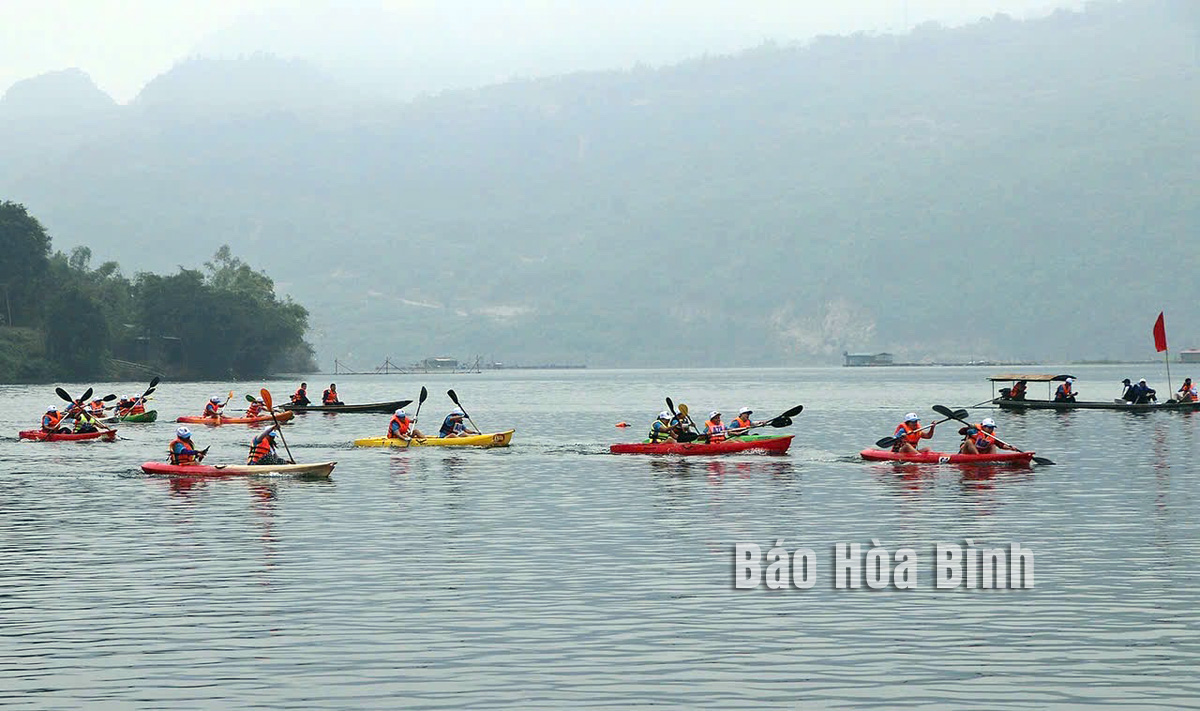.jpg)
The smart tourism software of Hoa Binh province forms part of the package of smart urban solutions, which optimises information and communications technologies to form a tourism ecosystem and offer benefits to tourists, authorities and businesses. It has facilitated the building of a high-quality tourism industry, contributing to local sustainable economic development.
Over the past time, Da Bac district has
promoted tourism in the Da River area through websites.
Since late 2021, tourist attractions in Mai Chau
district have been included on the electronic map. By simply scanning 2D and 3D
images, tourists can access information about the destinations.
Ha Thi Lieu, deputy head of the Mai Chau district
Bureau of Culture and Sports, said over the past time, the locality has made
progress in attracting tourism investment with projects worth hundreds of
Vietnam dong.
Besides, seven community-based tourism
destinations and a number of high-end resorts have been put into operation,
contributing to economic restructuring, and creating jobs, and increasing
income for locals, she added.
To promote its tourism products, the district
has selected 26 relics and tourist attractions for the "digital"
tourism map. Over the past time, Hoa Binh province has paid
attention to building the smart tourism system, which comprises a portal, a
mobile application, data integration infrastructure, and a tourism industry
reporting system.
To serve it, public wifi services are offered at
Hoa Binh Lake, Mai Chau, and Tien Pagoda tourist sites. Via the website at http// hoabinhtourism.vn,
visitors can learn about the unique culture, scenery and people of Hoa Binh,
and book hotels and restaurants, among other services. It also serves as a channel for enterprises to
introduce their promotion programmes, and as a tool for state management over
natural resources and tourism activities.
Deputy Director of the provincial Department of
Culture, Sports and Tourism Luu Huy Linh said the software has helped
facilitate local tourism, and promote digital transformation in the field,
towards turning it into an economic spearhead.
Located just a 20-minute drive from Hoa Binh City, Ora Hill Farmstay & Glamping Hoa Binh is a captivating new destination nestled in Mo hamlet, Bình Thanh commune, Cao Phong district. Combining farming with leisure, this tranquil retreat is perfect for those seeking balance, joy, and an immersive experience in the expansive beauty of nature.
Muong Bi - Tan Lac is renowned as one of the four famous Muong regions in Hoa Binh province. Blessed by nature with a favourable climate and stunning landscapes, Tan Lac holds great advantages for tourism development. The local tourism industry has made remarkable strides in recent times thanks to the attention and support from the local authorities and sectors.
With its strategic location, well-developed transport network, and diverse soil and climatic conditions, Hoa Binh is emerging as a must-visit destination in Vietnam's northwestern tourism corridor. The province boasts numerous attractions, including the Kim Boi hot springs (Kim Boi district), the Dau Rong cave complex (Cao Phong), the Mai Chau valley (Mai Chau), and the iconic Hoa Binh hydropower plant.
The northern mountainous province of Hoa Binh has been listed among the 71 most beautiful places to visit worldwide by the prestigious US travel magazine Condé Nast Traveller.
Hoa Binh province’s rich natural and cultural resources position it as a prime location for developing community-based tourism (CBT). In recent years, support from central and provincial policies, as well as assistance from non-governmental organisations, have encouraged local ethnic minority and mountainous communities to actively engage in the sector.


.jpg)
